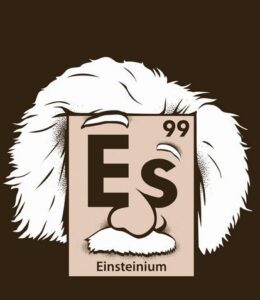Einsteinium, or how magical creatures lurk at the corners of the well-known map of elements. That would be a fair description of the mysterious element, but there’s no need to laugh at it. Some things are more than meets the eye and scientists can tell us why.
For the first time, a team of chemists gathered enough einsteinium to figure out more things about it. And the findings are genuinely intriguing.
Here is what you need to know.
Einsteinium: a Seven Decades Story of Mystery
For almost seven decades, isotopes of einsteinium have been proven annoyingly challenging to examine.Â
First, they were too hard to develop. Then, there’s this little thing that really annoys scientists: einsteinium has only a half-life of less than a year. So, can you imagine the hard work of scientists and their sufferance?

At last, victory
Thanks to the US Department of Energy’s Lawrence Berkeley National Lab, we are closer to understand einsteinium than ever.
In case you don’t know, the Barkeley Lab is incredibly popular. It discovered a big part of the upper bounds of the periodic table of elements!
Einsteinium has an atomic mass of 252 and contains 99 protons, meaning it needs some serious physics to produce.
For instance, making just a batch requires mixing curium or other smaller elements, with a few neutrons in a nuclear reactor. For the final result, we need to wait a lot.
This time around, scientists came up with approximately 200 nanograms of the einsteinium isotope E-254. The findings include significant data about the element’s bond distance and proof of wavelength-shifting emission behaviours not seen before in other actinides.
Rebecca Abergel, a researcher part of the team, released a statement, discussing the importance of einsteinium. She said:
“It’s significant because the more we understand about its chemical behaviour, the more we can apply this understanding for the development of new materials or new technologies…”
Einsteinium is right at the edge of something we can get using benchwork chemistry.Â
The more we figure out this element, the greater the potential for discovering stepping stones to constructing titans that lie in some parts of the map.













Leave a Reply